Here is a sample of abstracts from the clinical research conducted at the NIH Clinical Center and published in a peer reviewed medical journal in 2021. Links to the full text and video formats are provided if available.

How Not to Count the Health Benefits of Family Planning
Published in: Journal of Medical Ethics (December 2021)
How should governments consider the different benefits of family planning when making funding decisions? The article critically evaluates the claim that preventing newborn and child deaths through non-existence should count as health benefits of providing family planning access.
Read the article.

Automated CT-Based Body Composition Analysis: A Golden Opportunity
Published in: Korean Journal of Radiology (December 2021)
A host of non-invasive approaches other than cross-sectional imaging exist for estimating body fat. However, automated computed tomography (CT) image-based body composition analysis potentially offers value, especially for patients at greatest risk for downstream adverse clinical events.
Read the article.

Pneumocystis spp. in Pigs: A Longitudinal Quantitative Study and Co-Infection Assessment in Austrian Farms
Published in: Journal of Fungi (December 2021)
Through collaboration between NIH and Austrian researchers, a longitudinal study of a cohort of 50 pigs from Austrian farms identified a complex coinfection of Pneumocystis with other pathogens in pig lungs, with potential implications in the pathogenesis of porcine respiratory disease complex.
Read the article.

Evidence of SARS-CoV-2-Specific T-Cell-Mediated Myocarditis in a MIS-A Case
Published in: Frontiers in Immunology (December 2021)
Following SARS-CoV-2 infection (the virus that causes COVID-19), some develop a life-threatening illness called multisystem inflammatory syndrome (MIS) in adults (A). Despite negative COVID tests, autopsy data of a previously healthy 26-year-old patient suggests that he died of MIS-A resulting myocarditis (inflammation of the heart muscle) driven by SARS-CoV-2-specific T-cells.
Read the article.

Association between Implementation of the Severe Sepsis/Septic Shock Early Management Bundle Performance Measure and Outcomes in Patients with Suspected Sepsis in U.S. Hospitals
Published in: JAMA Network Journal (December 2021)
In an interrupted time-series analysis, implementation of SEP-1, a sepsis management performance measure, prompted more lactate testing but no change in already increasing broad-spectrum antibiotic use and no change in sepsis mortality. Other approaches to decrease sepsis mortality are needed.
Read the article.

Erytra blood group analyser and kode technology testing of SARS-CoV-2 antibodies among convalescent patients and vaccinated individuals
Published in: ejHaem (November 2021)
Modified red cells called C19-kodecytes can be used as reagent cells in any manual or automated column agglutination assay. The relative low cost and easy implementation make this a potentially valuable tool for the efforts of monitoring population immunity status in the SARS-CoV-2 pandemic.
Read the article.
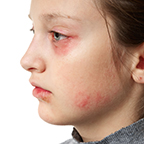
Association of Anti-HSC70 Autoantibodies with Cutaneous Ulceration and Severe Disease in Juvenile Dermatomyositis
Published in: Rheumatology (November 2021)
Anti-HSC70 autoantibodies were detected frequently in patients with Juvenile Dermatomyositis, commonly among those with cutaneous ulcers or using wheelchairs. These autoantibodies were not found in patients with Juvenile Idiopathic Arthritis or in healthy donors.
Read the article.

Experience with Voluntary SARS-CoV-2 Testing of Asymptomatic Staff at the National Institutes of Health for One Year
Published in: Cambridge University Press (November 2021)
The NIH Clinical Center has conducted voluntary asymptomatic SARS-CoV-2 testing on 12,660 individual on-site staff members. Of 105,927 tests, 0.2% were positive. 79% of eligible staff participated with variable frequency, with mid-turbinate collection being the dominant specimen choice.
Read the article.

Federated learning for predicting clinical outcomes in COVID-19 patients
Published in: Nature Medicine (September 2021)
Federated learning shares data from multiple sites anonymously (without actual data exchange) to build artificial intelligence models, without privacy barriers. Data from 20 institutes across the globe predicted future oxygen requirements in COVID-19 patients using vital signs, labs and chest X-rays.
Read the article.

Sensitive Extraction-Free SARS-CoV-2 RNA Virus Detection Using a Chelating Resin
Published in: iScience (September 2021)
NIH scientists have developed a new sample preparation method to detect SARS-Cov-2, the virus that causes COVID-19. The technique bypasses extraction of the virus’ genetic RNA material, simplifying sample purification and potentially reducing test time and cost.
Read the article.

The Impact of Corticosteroids on Secondary Infection and Mortality in Critically Ill COVID-19 Patients
Published in: Journal of Intensive Care Medicine (July 2021)
Corticosteroids, an anti-inflammatory therapy, do not increase the risk of secondary infection in patients who are critically ill with COVID-19. Researchers conclude Corticosteroids are safe, effective and a lifesaving therapy option in patients who are critically ill with COVID-19.
Read the article.

Developing Treatment Guidelines During a Pandemic Health Crisis: Lessons Learned From COVID-19
Published in: Annals of Internal Medicine (June 2021)
NIH established a 57-person panel of nationally recognized governmental, professional, and medical experts to help manage patients with COVID-19. The process of creating a panel and developing treatment guidelines provided important lessons for responding to an unprecedented public health emergency.
Read the article.
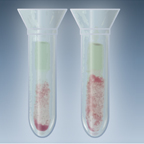
COVID-19 Antibody Detection and Assay Performance Using Red Cell Agglutination
Published in: medRxiv (June 2021)
Analytical validation of the C19-kodecyte SARS-CoV-2 immunoassay was performed in 140 clinical samples and 275 controls from healthy individuals. The easily scalable technique could vastly improve assay capacity, particularly in countries with under-developed health systems.
Read the article.

Improving Weakly Supervised Lesion Segmentation Using Multi-Task Learning
Published in: Proceedings of Machine Learning Research (May 2021)
Multi-task learning was used to improve the quality of skin and cancer lesion segmentation, while significantly reducing the training time. This research may benefit cancer patients because lesion size, obtained here by segmentation, is an important indicator of treatment response.
Read the article.
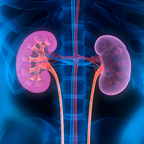
Genetic and Epidemiologic Analyses of an Outbreak of Pneumocystis Jirovecii Pneumonia among Kidney Transplant Recipients in the United States
Published in: Clinical Infectious Diseases (May 2021)
An outbreak of Pneumocystis pneumonia (PCP) in the Yale kidney transplant clinics promoted a collaborative investigation which identified an interhuman transmission of multiple Pneumocystis strains and highlights the critical role of next-generation sequencing in better understanding the epidemiology of PCP outbreaks.
Read the article.

Putting Anti-Racism into Practice as a Healthcare Ethics Consultant
Published in: The American Journal of Bioethics (May 2021)
The events of this past year and the evidence they reveal about the ongoing impact of racism on the health of Black Americans and other minorities moves us to consider the role of healthcare ethicists in addressing this injustice within healthcare organizations.
Read the article.

Hereditary Alpha-Tryptasemia (HαT): a Commonly Inherited Modifier of Anaphylaxis
Published in: Current Allergy and Asthma Reports (May 2021)
Hereditary Alpha-Tryptasemia is a dominant genetic trait and a common cause for elevated basal serum tryptase in Western populations. HαT is now established as a risk factor for severe anaphylaxis among individuals with venom allergy- particularly in the context of mast cell–associated disorders.
Read the article.
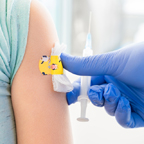
Enrolling Minors in COVID-19 Vaccine Trials
Published in: Pediatrics (March 2021)
A systemic approach is proposed for enrolling minors in COVID-19 vaccine trials. Beginning with older healthy adolescents, minors should be enrolled after safety is established, but before efficacy is proven in adults.
Read the article.

Effects of Chloroquine or Hydroxychloroquine Treatment on Non‐SARS‐CoV2 Viral Infections: A Systematic Review of Clinical Studies
Published in: Reviews in Medical Virology (March 2021)
A systematic review of prior clinical studies comparing the effects of chloroquine or hydroxychloroquine to a control for the treatment of non‐SARS‐CoV2 infection shows no support for their use as antiviral treatments for SARS‐CoV2.
Read the article.
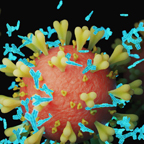
COVID-19 Antibody Screening with SARS-CoV-2 Red Cell Kodecytes Using Routine Serologic Diagnostic Platforms
Published in: Transfusion (February 2021)
Red blood cells modified with Kode Technology to resemble the COVID-19 virus can be used with routine blood antibody screening equipment to detect antibodies to COVID-19.
Read the article.

miR-181c Regulates MCL1 and Cell Survival in GATA2 Deficient Cells
Published in: Journal of Leukocyte Biology (January 2021)
Findings indicate that germline mutations in GATA binding protein 2 (GATA2) lead to increased miR-181c gene expression, down-regulation of MCL1, and enhanced cell death, thus potentially contributing to characteristic cytopenia (lower blood cell counts), immunodeficiency, and bone marrow failure found in GATA2 deficiencies.
Read the article.
Read more articles about research in the NIH Clinical Center in 2021.

